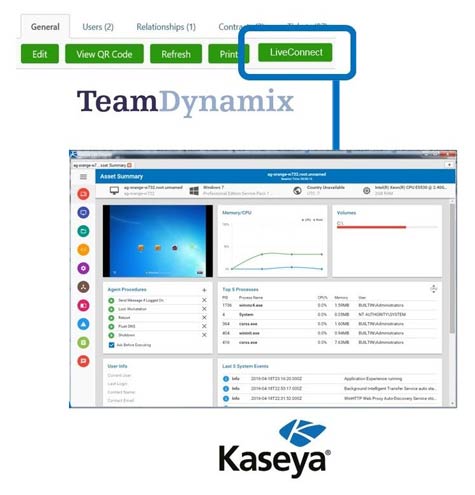Most IT service desks are reactionary. Somewhere in the enterprise an event occurs that generates a job ticket that someone on the IT staff then investigates. The length of time it takes to perform that investigation is usually in direct proportion to the amount of frustration the end user winds up directing at the IT department while waiting for the issue to be resolved.
Looking to make IT service desks much more proactive than they generally are at the moment, Kaseya revealed today an alliance under which its monitoring tools will automatically be able to generate job tickets within a help desk system developed around a workflow management service delivered via the cloud by TeamDynamix.
Mike Puglia, chief product officer at Kaseya, says that the Kaseya VSA platform, announced at the EDUCAUSE 2016 conference, can identify potential IT issues before they impact end users.
The IT staff can then proactively address those issues like any other job ticket generated in the TDX service desk delivered as a cloud service by TeamDynamix. The only difference is there isn’t a bunch of annoyed end users involved in the process.
To accomplish that integration, Puglia says the two companies collaborated to standardize everything from application programming interfaces (APIs) to single sign-on capabilities.
Andrew Graf, vice president of sales support and customer success for TeamDynamix, says that instead of reinventing the IT monitoring wheel, it made more sense for TeamDynamix to partner with Kaseya to create a best-of-breed solution aimed specifically at the higher education market. That vertical segment of the IT market is especially challenged because of both the transitory nature of end user community and the vast amounts of sensitive data higher education institutions handle.
“There are a whole range of compliance issues involving everything from credit cards to grades,” says Graf.
Longer term, Puglia says, Kaseya will leverage this work to integrate with other IT service desk platforms as well.
“We want to make our platform as extensible as possible,” says Puglia.
Hopefully, as that integration work continues, the number of IT incidents that end users will directly experience will start to decline.




